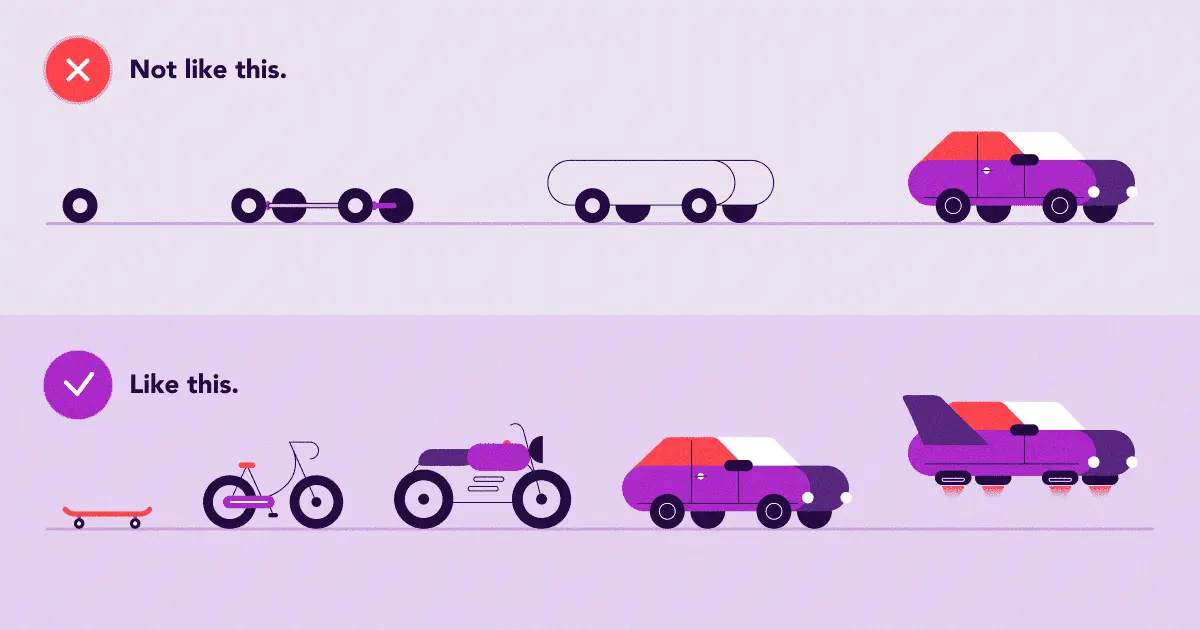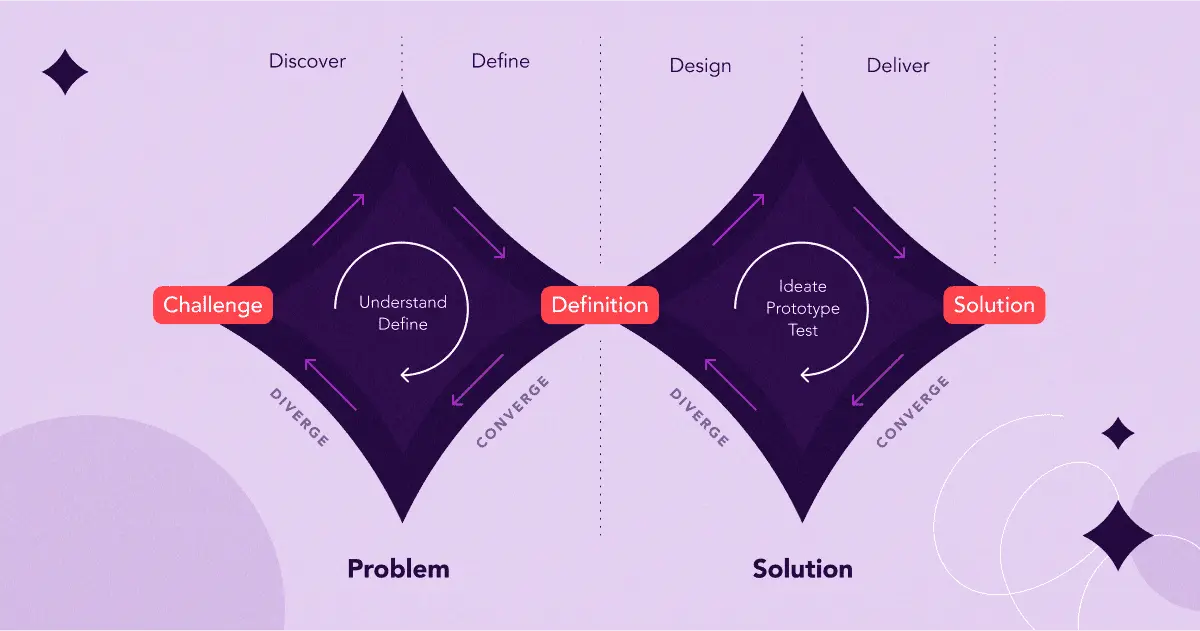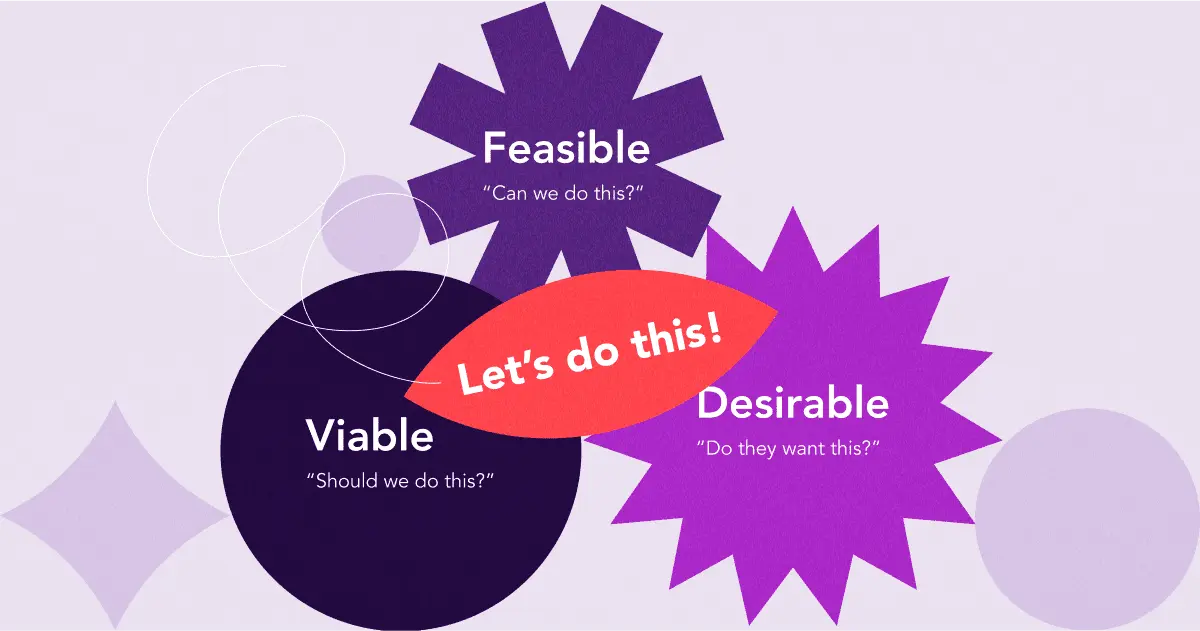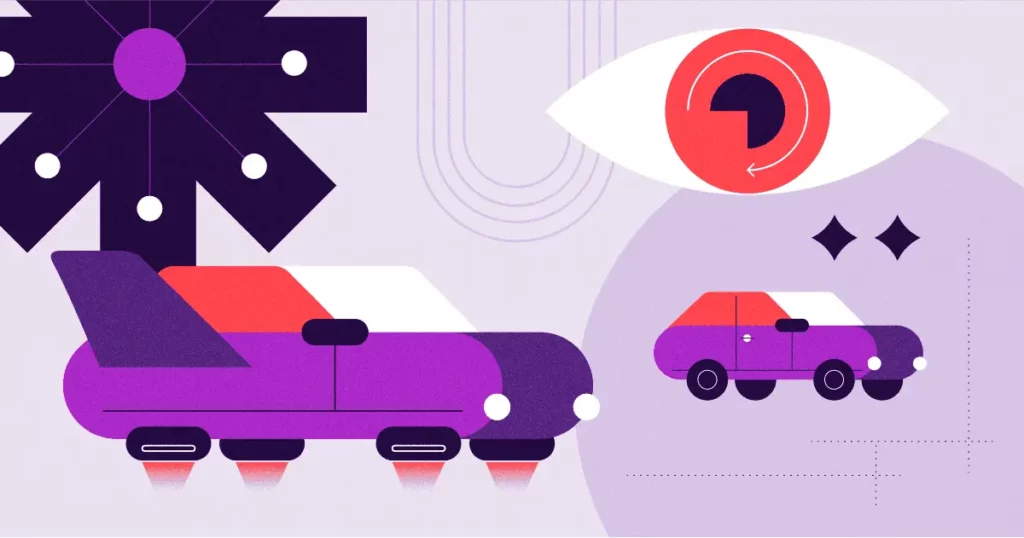When is a process more than a process? Usually, when it requires a new way of thinking. That’s what you get with iterative product design. And that’s how you know how effective and powerful it is. It’s not only distinctive from traditional product design—it has an entirely different philosophy behind it.
Iterative design solves business problems by letting products evolve over time. It’s a repeating cycle of designing, testing, and refining multiple versions of a product.
A common way to describe this is in terms of building a car. In a traditional design model, you would consider all the disparate parts you need to create the whole vehicle, and start building from there—thinking that the car is already the best solution, and without understanding which features are the most valuable, and learning why throughout the process. But with iterative design, you would consider that building a car is actually about solving the problem of how to get from point A to point B.
So maybe you’d begin with a smaller vehicle, like a skateboard—something that has the core feature of wheels, allowing the skateboard to move, and the board, which allows the user to ride the skateboard. Then, you’d continually add or enhance features to make that vehicle more powerful and efficient, or for better handling and comfort. In the long run, this could mean ending with a car. Or it could mean a car is just another step in the design process, as you ultimately find yourself designing something new and unexpected—like an electric car, or even a flying car.

How Iterative Product Design Works
This metaphor shows us that iterative product design is a journey that doesn’t end. It’s a path toward creating the best possible product that meets user needs. It’s also a lot like the scientific method. It allows designers to test ideas, and discover if and how they work. And it leads to continued improvement and innovation. They get to adjust a design in real time while identifying problems, taking in user feedback, and integrating new ideas.
What Makes Iterative Design Different From Traditional Design?
Traditional design is more focused on results than on the process itself. In contrast, iterative design is more effective, efficient, and empathetic toward user needs. It’s also more collaborative, and puts designers in a constant flow of discovering, defining, designing, and delivering.

A great deal of research goes into iterative design, as well as client and user feedback. This all occurs during the process of designing and adjusting. Designers can test and refine several versions of a product, and make sure the process solves the right problem. They can validate results quickly, and ultimately create something that actually works. Even better, a company will save valuable time and resources that might have otherwise been spent building the wrong thing.
Iterative product design views design through 3 different lenses:
- How to meet business needs, and support short-term profit and long-term growth;
- How to meet users’ needs and desires, while differentiating between nice-to-haves and need-to-haves; and
- How to make the product technically feasible—ensuring it leverages the company’s current capabilities, and that those capabilities can be built to make the business healthier and stronger.

This is a holistic take that leads to effective innovation, and allows designers to thoroughly understand the opportunities and limitations that inform their decisions.
What Makes Iterative Product Design Advantageous?
So to continue with the car metaphor, of course you want to get closer to a design that’s more analogous to a hovercraft than a bike with training wheels. With iterative design, you have the tools and mindset that can help you arrive there. But that isn’t where the advantages stop. When it comes to iterative product design, consider that you have the opportunity to:
- Solve the right problem. This first point is important. You don’t want to spend hours of work only to realize you’re not working on users’ biggest problem. Iterative design lets you take steps that move gradually closer to a solution, instead of relying on research and development, ideation, or analysis to take a single step. It’s active, engaged, and direct.
- Save time and money. Because iterative design is so efficient, and because it’s focused on solutions, it saves significant amounts of time and money. This is especially significant because it minimizes the risk of overinvesting in the development and launch of a product.
- Learn quickly. Iterative design usually requires product designers to be nimble. Taking your time to come up with a solution guarantees that someone else will get to that solution first. Moving through the iterative design process requires focus and agility. It’s about having the capacity to test and validate against your objectives and results, and see for yourself whether you’re achieving them.
- Create a more user-friendly process—and more user-friendly products. Iterative design brings end users into the process much earlier than traditional design. That means you can find issues or pain points right away, and address them before creating further prototypes. It allows you to stay focused on what users need, and discard anything that isn’t that. And it shows how iterative design goes beyond being user-friendly. It also leads to more user-friendly outcomes.
Iterative Product Design: Endless Potential, Continuous Improvement
Iterative product design leads from confusion to clarity when solving user problems.It helps companies think holistically, get a working product in front of users quickly, and evolve over time. It leads to products that are technically sound, and that address business and user needs. It’s innovation put into conscious, continuous action. And that leaves you with continuous improvement, and products with endless potential that users will love.
